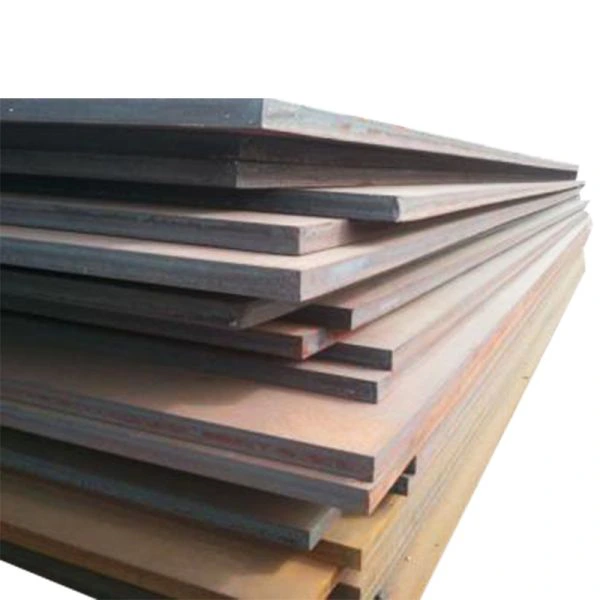High strength properties of hot rolled carbon steel plates
2025-06-23
Hot-rolled carbon steel plates are widely used in construction, heavy machinery, and structural applications due to their high strength and versatility. The high-strength properties of these plates can be attributed to several factors, including the following:
1. Increased Hardness and Tensile Strength
Hot-rolling enhances the hardness and tensile strength of carbon steel. When the steel is heated and rolled at high temperatures (usually above 1,100°C), its microstructure undergoes transformations that increase its strength.
The typical tensile strength of hot-rolled carbon steel plates ranges from 400 MPa to 600 MPa, depending on the carbon content and alloying elements used.
2. Improved Ductility
Despite their strength, hot-rolled carbon steel plates retain good ductility, meaning they can be formed or stretched without breaking. This is an important factor when the steel is subject to bending or stretching during manufacturing processes.
Ductility is a result of the high temperature at which hot rolling occurs, which helps in refining the microstructure.
3. Grain Refinement
The hot-rolling process breaks down coarse grains, resulting in a fine-grained structure that increases the material's overall strength. This fine grain structure contributes to better toughness and resistance to crack propagation.
Grain refinement helps improve the material’s performance in high-stress environments by enhancing fatigue resistance.
4. Improved Toughness at Low Temperatures
High-strength hot-rolled carbon steel exhibits better toughness, even at low temperatures, making it suitable for use in cold environments without risk of brittle fracture. This is important in structural applications where the steel may be exposed to extreme conditions.
5. Uniform Mechanical Properties
Hot-rolled steel plates generally have more uniform mechanical properties across their thickness and length compared to cold-rolled plates. This consistency ensures predictable performance in applications requiring high strength.
6. Increased Yield Strength
The yield strength of hot-rolled carbon steel is a critical factor in preventing permanent deformation under load. The hot-rolling process aligns the crystal structure in a way that increases yield strength, enabling the steel to withstand heavier loads before yielding.

7. Alloying Elements for Strength Enhancement
Carbon content: The higher the carbon content, the stronger the steel. However, excessive carbon can reduce the material's weldability and formability.
Manganese: It enhances strength, hardness, and wear resistance. It also helps in improving hardenability.
Chromium: Improves corrosion resistance and increases strength at higher temperatures.
Molybdenum: Improves strength, hardenability, and resistance to wear and corrosion.
8. Resistance to Corrosion and Fatigue
Hot-rolled plates made from alloyed carbon steels (e.g., ASTM A36, A572) exhibit improved resistance to corrosion and fatigue over time. These properties are essential for use in infrastructure projects, machinery, and bridges, which experience repetitive loading.
In summary, the high-strength properties of hot-rolled carbon steel plates are a result of a combination of factors including heat treatment during the rolling process, grain refinement, and the presence of alloying elements. These properties make hot-rolled carbon steel ideal for structural, mechanical, and engineering applications where high strength and durability are required.
As a professional manufacturer and supplier, we provide high-quality products. If you are interested in our products or have any questions, please feel free to contact us.


